The city - sliced, diced and served with a dash of sauce
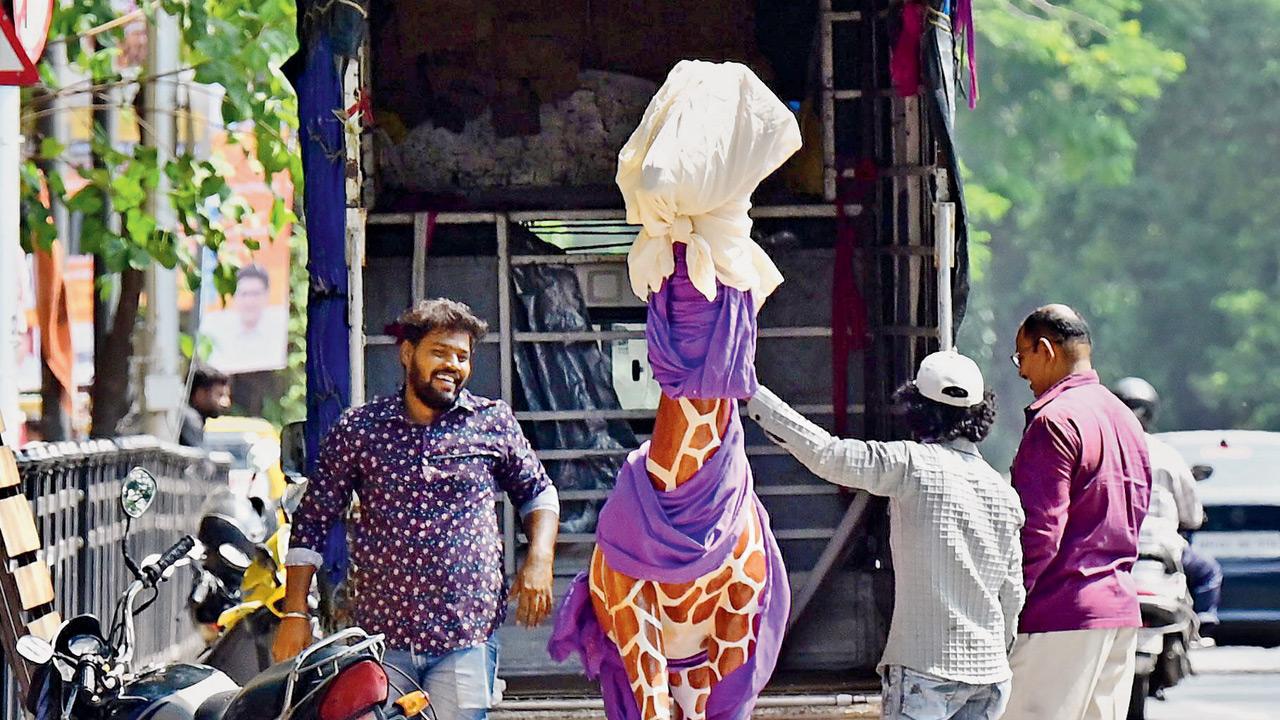
Pic/Shadab Khan
A tall order
The wrapped-up installation of a giraffe is unloaded off a tempo at Shivaji Park in Dadar
A royal visit
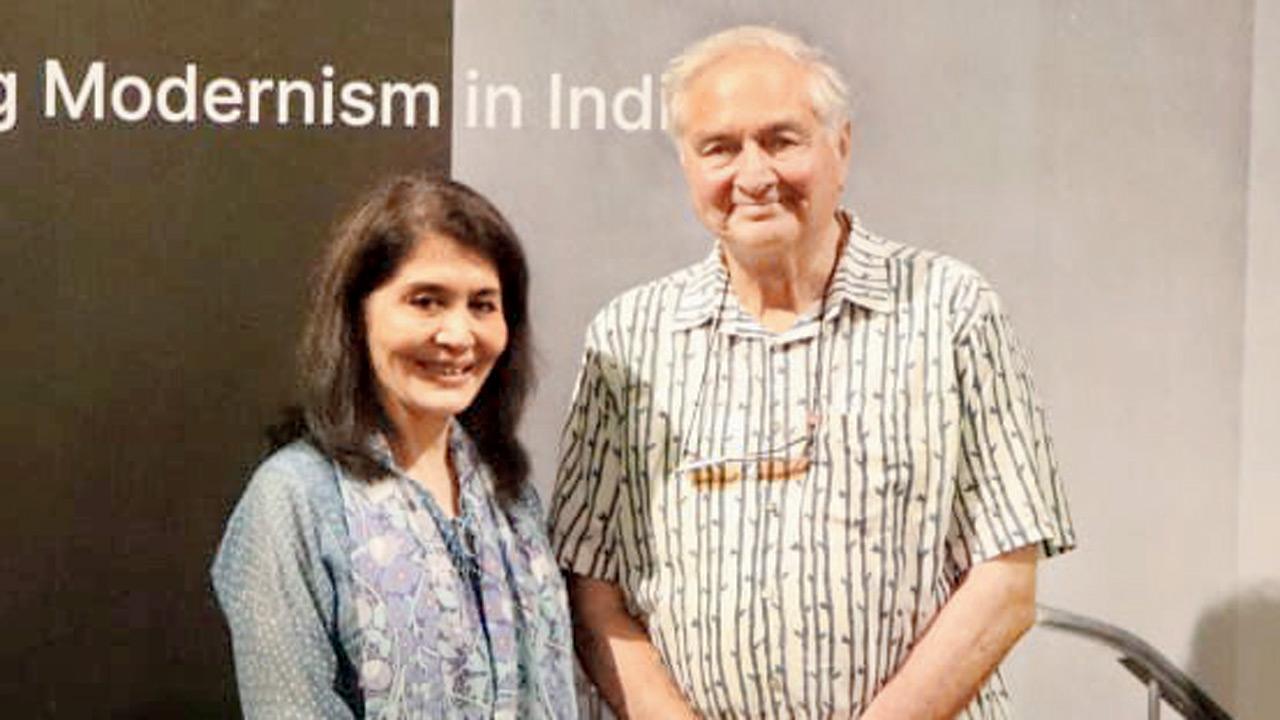
Tasneem Zakaria Mehta with the prince Shri Richard Shivaji Rao Holkar. Pic courtesy/Dr Bhau Daji Lad Museum
It was a prestigious moment when the Holkar royal family dropped in at the Dr Bhau Daji Lad Museum last Saturday. Prince Shri Richard Shivaji Rao Holkar was visiting to catch a glimpse of the ongoing exhibition, Eckart Muthesius and Manik Bagh: Pioneering Modernism in India. Centred around the iconic Manik Bagh, conceptualised for the prince Yeshwant Rao Holkar II, the prince’s father, it was a moment of nostalgia. “In fact, they had not seen the home film, made by the late Maharaja and his wife, Maharani Sanyogita. They were delighted by the exhibition. The Manik Bagh remains an iconic piece of Indian modernism,” Tasneem Zakaria Mehta, director, told this diarist.
A letter from a Mumbaikar
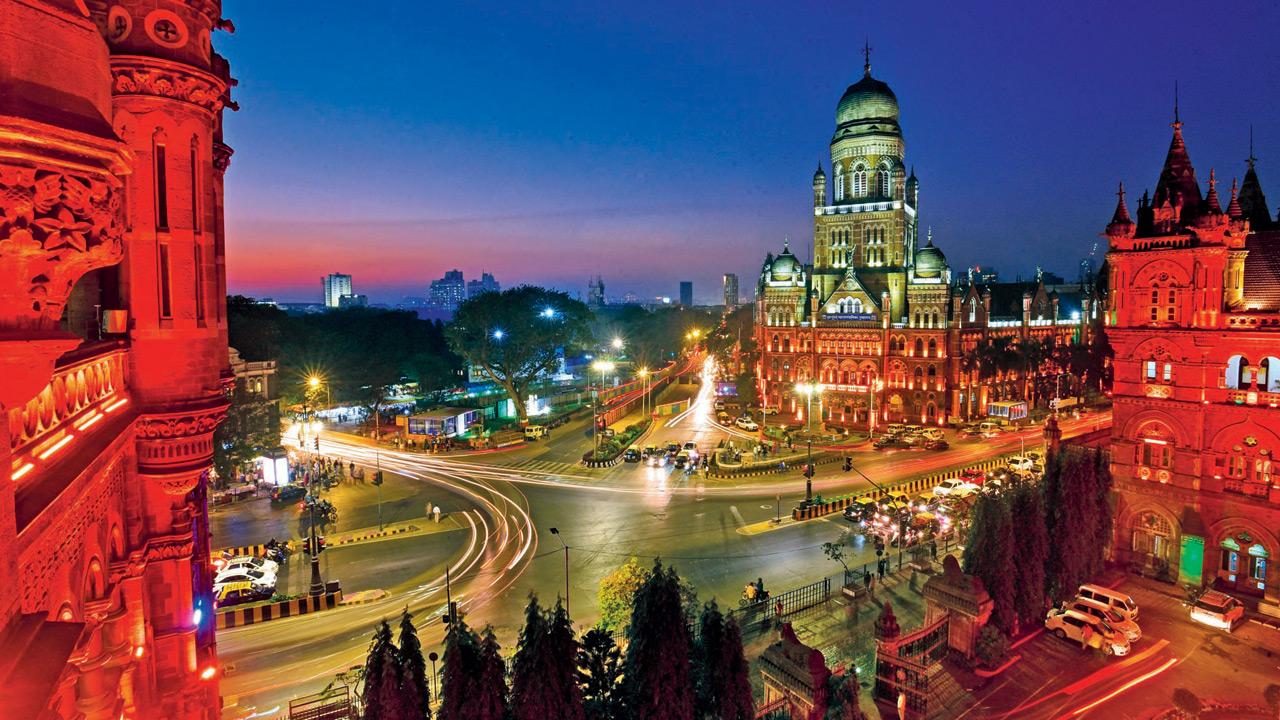 An aerial shot of BMC Headquarters from CSMT. Pics/Rane Ashish
An aerial shot of BMC Headquarters from CSMT. Pics/Rane Ashish
A letter from a political party’s chief always sends a newsroom into a tizzy. Last week witnessed something similar when Maharashtra Navnirman Sena chief, Raj Thackeray, sent in a personalised note. Thankfully, it was a letter of thanks addressing his inability to attend mid-day photo editor Rane Ashish’s recently concluded exhibition, Mumbai from Above at the Mumbai Press Club. The letter read: ‘Dear Ashish, I had received the invitation you sent for the inauguration of your photography exhibition.
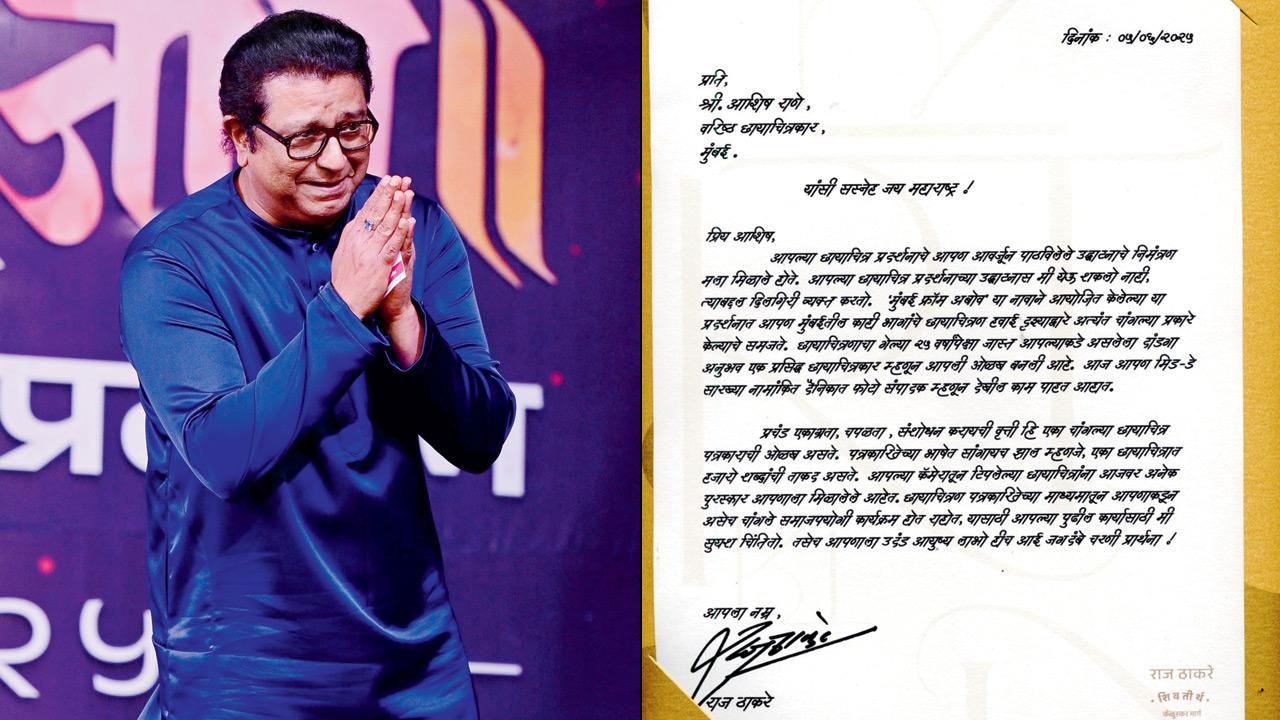
The letter from Raj Thackeray
I apologise for not being able to attend it in person. It is understood that you have photographed some parts of Mumbai very well from the air. Your vast experience of photography over the past 25 years has made you a renowned photographer. Today, you are also working as a photo editor in a renowned daily like mid-day. Great concentration, agility, and a penchant for research are the hallmarks of a good photojournalist. In the language of journalism, a photograph is worth a thousand words. You have received many awards for the photographs captured by your camera so far. I am very much concerned about your future work so that you continue to do such good social programmes through photojournalism. Also, I pray to the feet of Mother Jagdamba that you may have a prosperous life! Yours humbly, Raj Thackeray’. High praise, we’d say.
Shades of an umbrella
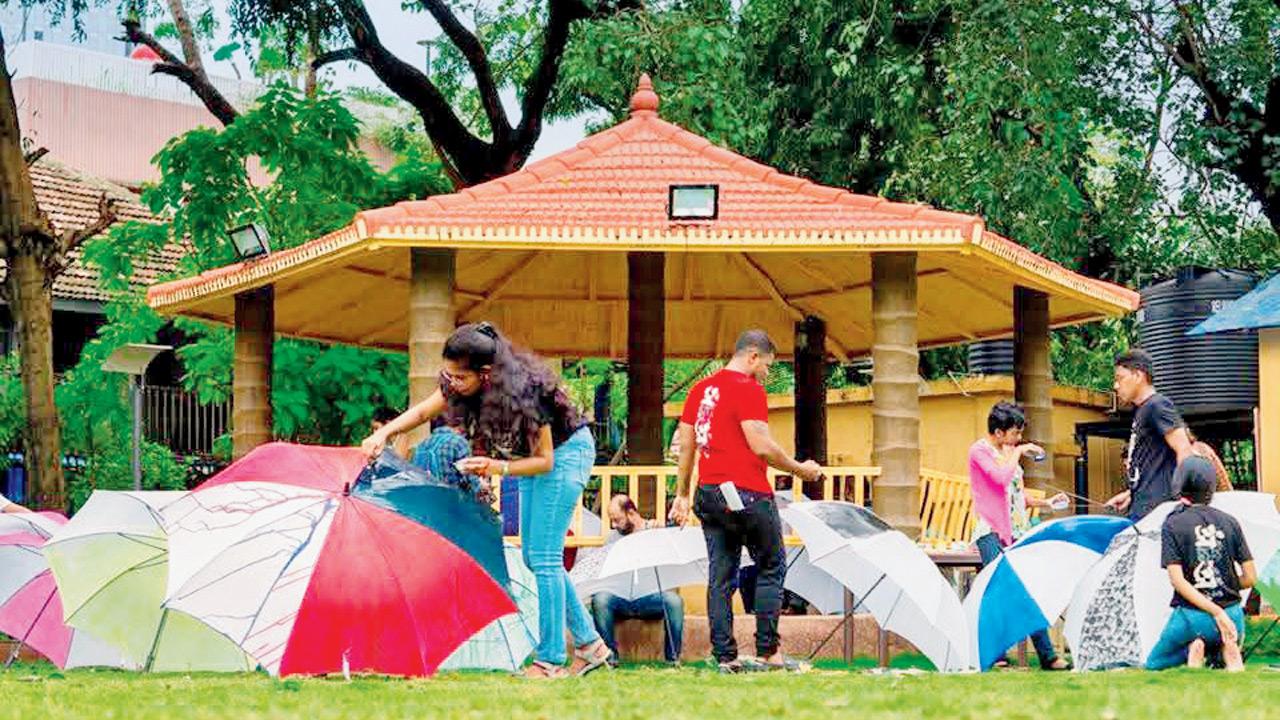
A moment from the previous session. Pic courtesy/Art Portal
Now might be the perfect time to give your boring umbrellas a colourful makeover. Recently, Art Portal co-founders Dipti Wagal and Krupali Koli conducted an umbrella painting workshop that catered to all age groups. Koli said, “We conducted a workshop in 2019, and it was a huge success. Based on the response, we conducted another workshop at Dadar. In this session, instead of using acrylic colours, we used acrylic markers that are less messy and more creative, as everybody can use them. Last time, when we conducted the workshop, it was a hit among children. They splashed colours and used handprints on the umbrellas. For this edition, the theme for the workshop was mandala art. Even though the theme sounded difficult, it was very simple, and everyone was able to do it.” If you are keen to know more about their workshops, dial 9920238938.
When food and art make a canvas
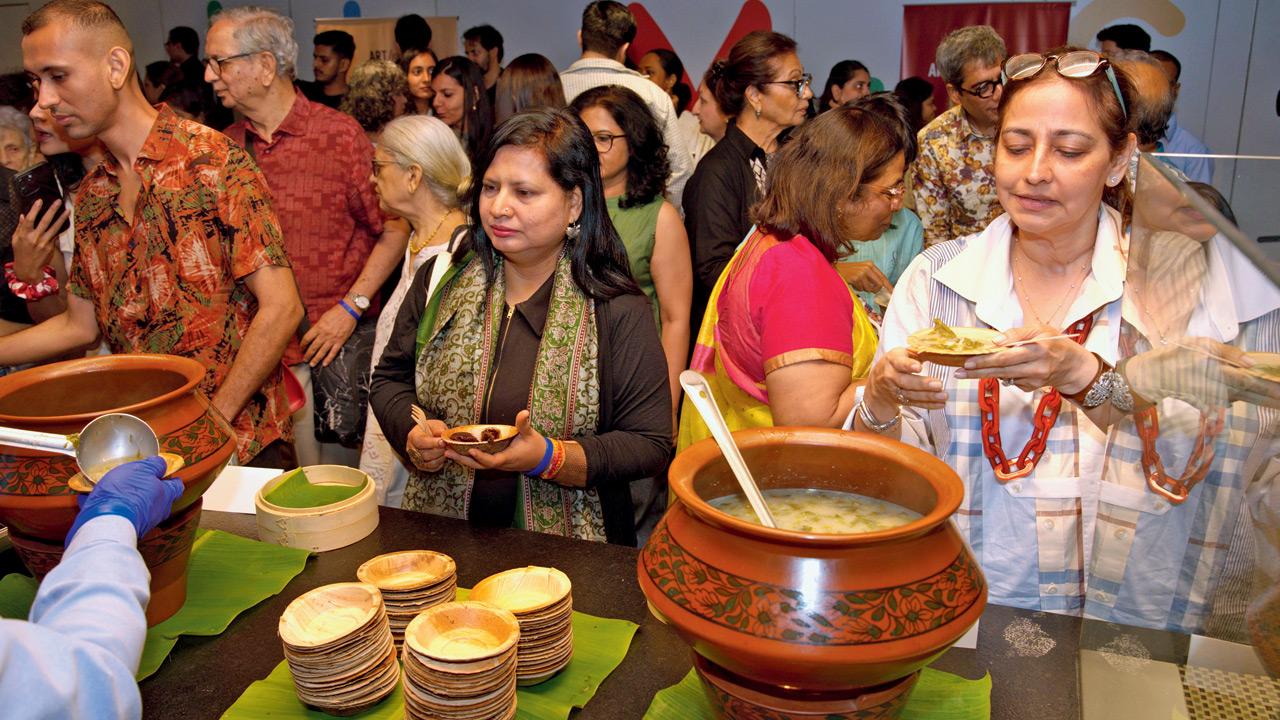 Guests enjoying traditional Naga dishes at the event. Pics courtesy/MuSo
Guests enjoying traditional Naga dishes at the event. Pics courtesy/MuSo
Over the weekend, the JSW Foundation and ART INDIA magazine hosted an evocative evening in Lower Parel to launch their latest issue featuring artist Thamshangpha ‘Merci’ Maku. Supported by Sangita Jindal, the event focused on Don't Die Starving — Merci’s powerful work rooted in memory, hunger, and home.
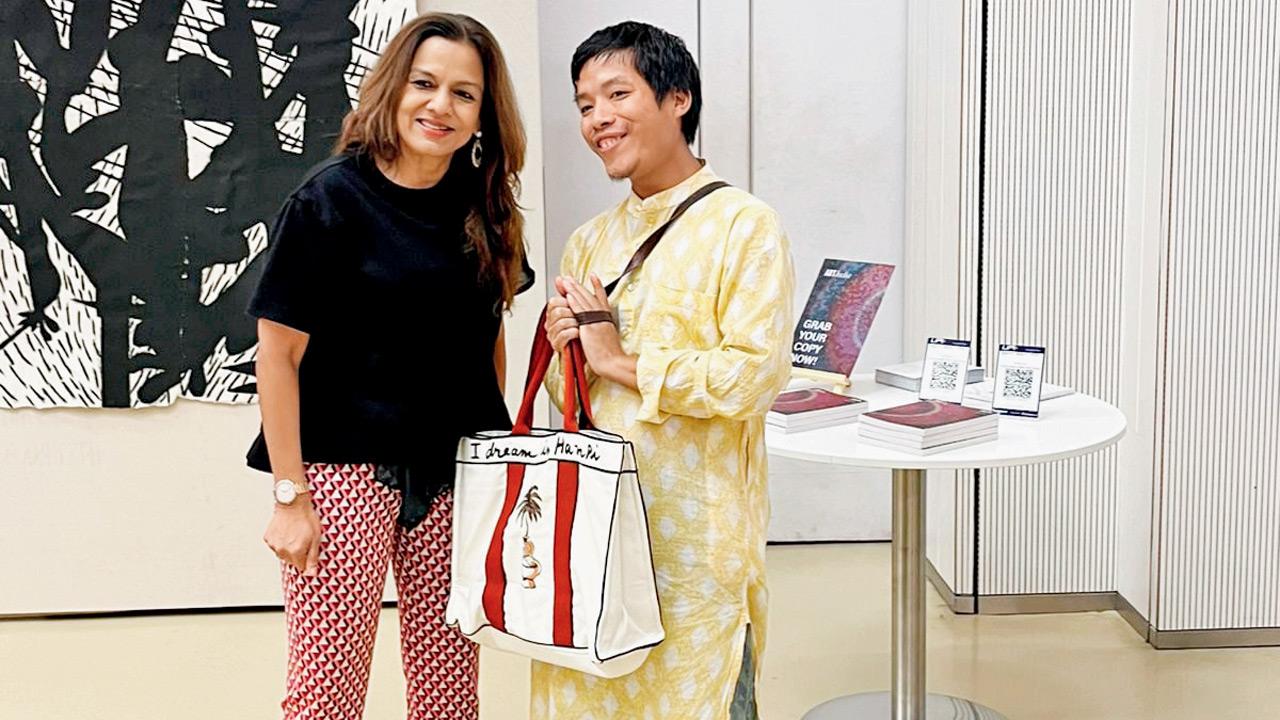
Hailing from Chandel in Manipur, Merci blends personal memory and political reality in his textured, abstract canvases, which reflect the emotional toll on the ongoing conflict.. Listening to his mother’s voice notes as he paints, he weaves longing and resilience into his work. Merci shared three traditional Naga dishes — Sticky rice cake, Vegetable porridge, and Chicken porridge — alongside a short film on sourcing ingredients and cooking, creating a rich sensory link between food, identity, and art.
Merci calls himself a witness — a gatherer of stories through food. “Food connects us to our roots like nothing else,” he says. Moving to the city, the first thing he missed was taste — a feeling your heart knows before your taste buds do. Don’t Die Starving is a protest against erasure and forgetting — not just of food, but of care, connection, and culture. Back home, ingredients and stories are cherished. This performance is his attempt to preserve both. “To me, this is home. In every bite, I hope someone remembers theirs. Don’t die starving. Feed yourself in every way that matters.”
The evening ended with an intimate fireside chat where Merci spoke about exploring his journey as an artist and a keeper of forgotten histories.
 Subscribe today by clicking the link and stay updated with the latest news!" Click here!
Subscribe today by clicking the link and stay updated with the latest news!" Click here!










